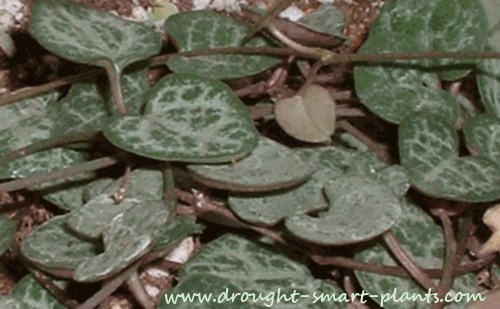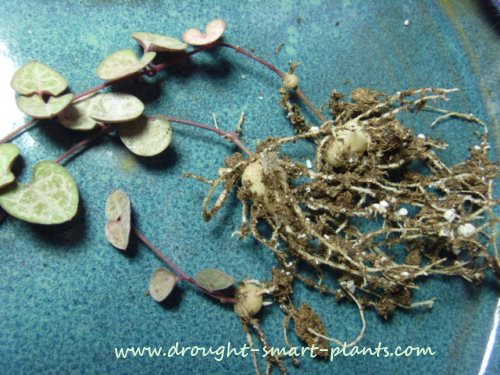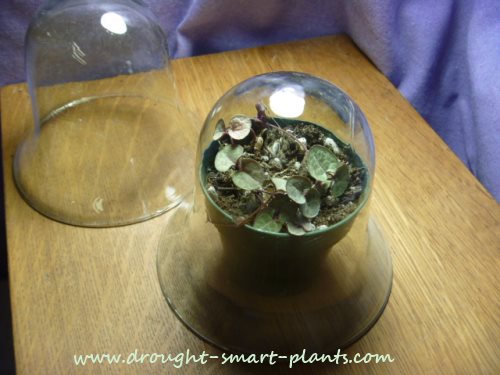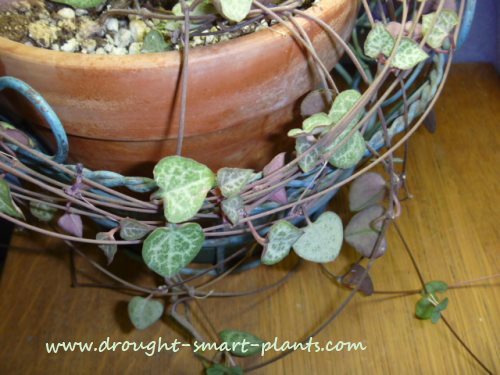Hearts Entangled or Rosary Vine – What a Charmer!
As an Amazon Associate I earn from qualifying purchases.
Other links on this site may lead to other companies that I’m associated with.
The cute appearance of Ceropegia woodii is guaranteed to charm.
The funny little dangly plant is the most well known of the Ceropegia tribe – its common names of Rosary Plant and Hearts Entangled will give you a hint of why it’s considered so charming.

Ceropegia woodii is a sparsely leaved very delicate seeming plant, with long internodes (the space between the leaves which are arranged in pairs opposite one another) and pinkish purple wiry stems.
The leaves are slightly puffy, with interesting silver markings on the green top side, and a metallic sheen to the pale maroon undersides.
It is interesting in that it has water storing tubers, a particularly effective drought smart strategy.
It is also somewhat particular in its preference for a good dowsing with tepid water, followed by almost completely drying out.
Above all things, it hates being too wet for too long.
I’ve neglected mine sporadically to the point when the leaves actually wither, and it appears dead, only to resurrect completely within 24 hours with a thorough watering.
How to propagate Ceropegia woodii

As the stems become really long with age, this plant benefits from a hair cut, and instead of wasting the prunings, simply make more plants.
Eventually, even the healthiest of these plants will succumb to old age, and if you have more young plants to take its place, you will never have to be without.
Cut the long stems into pieces with at least one leaf node on it, and taking a clump of about four or five stems, insert them into the center of a prepared pot of soil.
The soil should be sterilized potting soil, preferably peat based, with the addition of about 50% perlite or pumice.
You can use a rooting hormone such as Stimroot #2, or similar, and then cover the whole pot with a cloche or jam jar.

Periodically, shake off the large droplets of condensation that will form on the inside of the cloche, as these will fall on the cuttings and encourage damping off, a serious fungal disease.
After about 2-3 weeks, check and see if the cuttings are rooted, and once they are, gradually remove the cloche for several hours each day, until they show no signs of wilting.
Eventually, the whole pot will be full of the funny little potato like tubers, which can also be separated into new plants.



